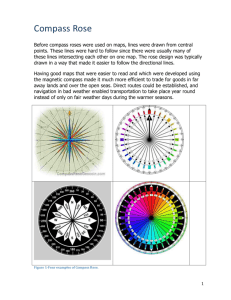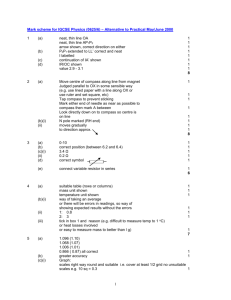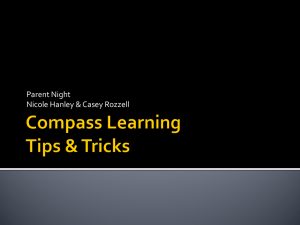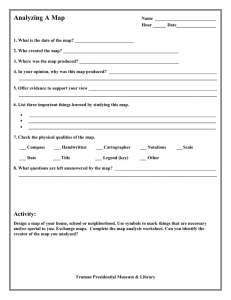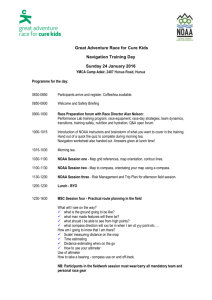Understanding Wind Direction
advertisement
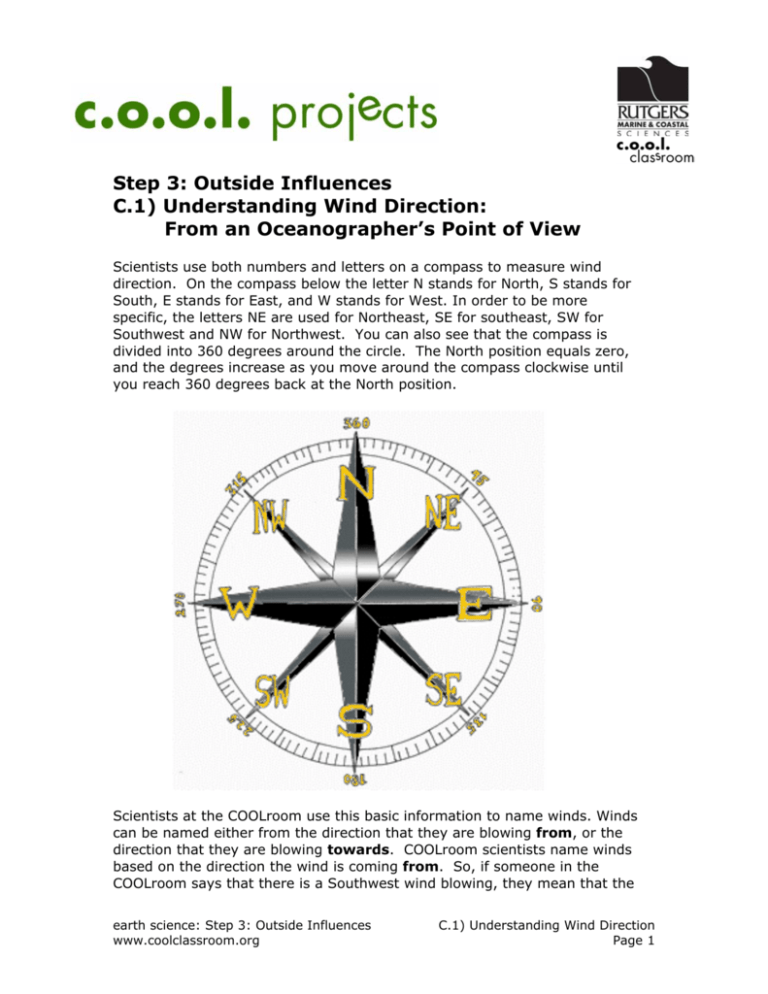
Step 3: Outside Influences C.1) Understanding Wind Direction: From an Oceanographer’s Point of View Scientists use both numbers and letters on a compass to measure wind direction. On the compass below the letter N stands for North, S stands for South, E stands for East, and W stands for West. In order to be more specific, the letters NE are used for Northeast, SE for southeast, SW for Southwest and NW for Northwest. You can also see that the compass is divided into 360 degrees around the circle. The North position equals zero, and the degrees increase as you move around the compass clockwise until you reach 360 degrees back at the North position. Scientists at the COOLroom use this basic information to name winds. Winds can be named either from the direction that they are blowing from, or the direction that they are blowing towards. COOLroom scientists name winds based on the direction the wind is coming from. So, if someone in the COOLroom says that there is a Southwest wind blowing, they mean that the earth science: Step 3: Outside Influences www.coolclassroom.org C.1) Understanding Wind Direction Page 1 wind is coming from that direction. So, a Southwest wind comes from the Southwest, and is moving towards the Northeast. If you want to use degrees instead, a Southwest wind direction equals 225 degrees. So, in the COOLroom, a wind direction of 225 degrees means that the wind is coming from the 225 degree position of the compass, and is moving towards the opposite direction, or 180 degrees away. If you subtract 180 from 225, you are left with 45 degrees (225 – 180 = 45). So, a wind coming from 225 degrees is moving towards the 45 degree position. Let’s look at some examples: 1. The COOLroom reports that the direction the wind is coming from is 50 degrees. This measurement is less than 180 degrees, so we need to add 180 degrees to determine the direction that the wind is moving towards. If we do the math, 50 + 180 = 230 degrees. This means that the wind is moving towards 230 degrees, which is approximately Southwest on the compass. 2. The COOLroom reports that the direction the wind is coming from is 300 degrees. This measurement is more than 180 degrees, so we need to subtract 180 degrees to determine the direction that the wind is moving towards. If we do the math, 300 - 180 = 120 degrees. This means that the wind is moving towards 120 degrees, which is between East and Southeast on the compass. Are you confused? Just remember that the graphed wind direction is calculated in the COOLroom by adding or subtracting 180 degrees to the measured wind direction. If the measured wind direction is 180 degrees or less, add 180 degrees to the measurement. If the measured wind direction is 180 degrees or more, subtract 180 degrees from the measurement. earth science: Step 3: Outside Influences www.coolclassroom.org C.1) Understanding Wind Direction Page 2

